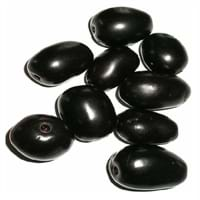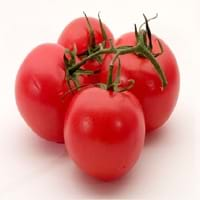Health Benefits
Cancer prevention, Heart care, Increase in haemoglobin, Regulates Blood Sugar, Ulcer prevention
Anti depressant, Cancer prevention, Heart care, Muscle pain relief, Prevents constipation, Regulation of heart rate, Weight loss properties
General Benefits
Boosts immune system, Digestive aid, Fights against infections, Strengthens bones
Controls blood pressure, Eye care, Maintains healthy cholesterol level, Strengthens bones
Skin Benefits
Brightens and lightens complexion, Skin cleansing, Skin rejuvenation, Treatment of acne, Treatment of dark spots
Anti-aging benefits, Heals sunburn, Skin rejuvenation, Treatment of acne, Treatment of skin diseases
Hair Benefits
Promotes longer and healthier hair, Protects hair
Good conditioner, Prevents hair loss, Softening mask
Allergy Symptoms
Abdominal pains, NA
Anaphylaxis, Coughing, Diarrhea, Eczema, Hives, Itching sensation in throat, Nausea, Skin Rashes, Runny nose, Sneezing, Swelling of mouth, tongue or lips, Vomiting, Wheezing
Side Effects
Decrease in blood sugar levels, Allergic reaction, Throat irritation, Throat swelling, Possibly unsafe during pregnancy
Heart burn
Best Time to Eat
As a snack in the late afternoon, Don't consume at night and before bed, Eat the fresh ones, avoid mixing with any other foods, don't eat after meal., Morning time (before lunch), Strictly avoid empty stomach
Along with meal, Don't consume at night and before bed, Morning time (before lunch)
Vitamin B5 (Pantothenic Acid)
Not Available
Vitamin B9 (Folic acid)
Not Available
Vitamin C (Ascorbic Acid)
Vitamin E (Tocopherole)
Not Available
Vitamin K (Phyllochinone)
Not Available
Lutein+Zeaxanthin
Not Available
Calories in Fresh Fruit with Peel
Calories in Fresh Fruit without Peel
Not Available
Not Available
Calories in Frozen Form
Not Available
Calories in Dried Form
Not Available
Calories in Canned Form
Not Available
Type
Tree fruit, Tropical
Berry, Fruit vegetable
Season
Monsoon, Summer
All seasons
Varieties
Ram Jarnun and Paras
Better Boy, Early Girl, Beefsteak, Beefmaster, Pink Brandywinem, Caspian Pink, Thai Pinks, Hawaiian Pineapple, Kellogg’s Breakfast, Cherokee Purple, Black Ethiopian and Paul Robeson
Color
Black, Magenta, Purple
Green, Orange, Pink, Purplish black, Red, White, Yellow
Taste
Astringent, Sweet
Sour, Sweet
Origin
Bangladesh, India, Indonesia, Malaysia, Nepal, Pakistan, Philippines, Sri Lanka
Central America, South America
Soil Type
Loam, Sandy loam, Well-drained
Loam, Sandy loam
Climatic Conditions
Humid, Rainfall
Sunny, Warm
Facts about
- Wood of jambul tree is water-resistant wood & is used in railroads and to implement engines in the well.
- In Indian mythology, it is said that Jambul fruit was revered by Buddha.
- Jambul has a huge importance in Ayurveda.
- Around 10,000 varieties of tomatoes are grown in the world.
- In Buñol, people celebrate the Tomatina festival where around 1.5 lakh tomatoes are used.
- As per Guinness book of records, heaviest tomato weighed 3.51 kg.
Other Countries
Bangladesh, Indonesia, Malaysia, Nepal, Pakistan, Philippines, Sri Lanka
Brazil, Egypt, India, Iran, Italy, Mexico, Spain, Turkey, United States of America
Top Importer
Not Available
Nigeria
Top Exporter
India
Netherlands
Botanical Name
Syzygium cumini
Solanum lycopersicum
Synonym
Eugenia cumini
Lycopersicon esculentum
Subkingdom
Tracheobionta
Tracheobionta
Division
Magnoliophyta
Magnoliophyta
Class
Magnoliopsida
Magnoliopsida
Subclass
Rosidae
Asteridae
Family
Myrtaceae
Solanaceae
Species
S. cumini
S. lycopersicum
Generic Group
Not Available
Nightshade
Difference Between Jambul and Tomato
We might think that Jambul and Tomato are similar with respect to nutritional value and health benefits. But the nutrient content of both fruits is different. Jambul and Tomato Facts such as their taste, shape, color, and size are also distinct. The difference between Jambul and Tomato is explained here.
The amount of calories in 100 gm of fresh Jambul and Tomato with peel is 60.00 kcal and 18.00 kcal and the amount of calories without peel is Not Available and Not Available respectively. Thus, Jambul and Tomato belong to and category.These fruits might or might not differ with respect to their scientific classification. The order of Jambul and Tomato is Myrtales and Solanales respectively. Jambul belongs to Myrtaceae family and Tomato belongs to Solanaceae family. Jambul belongs to Syzygium genus of S. cumini species and Tomato belongs to Solanum genus of S. lycopersicum species. Beings plants, both fruits belong to Plantae Kingdom.









